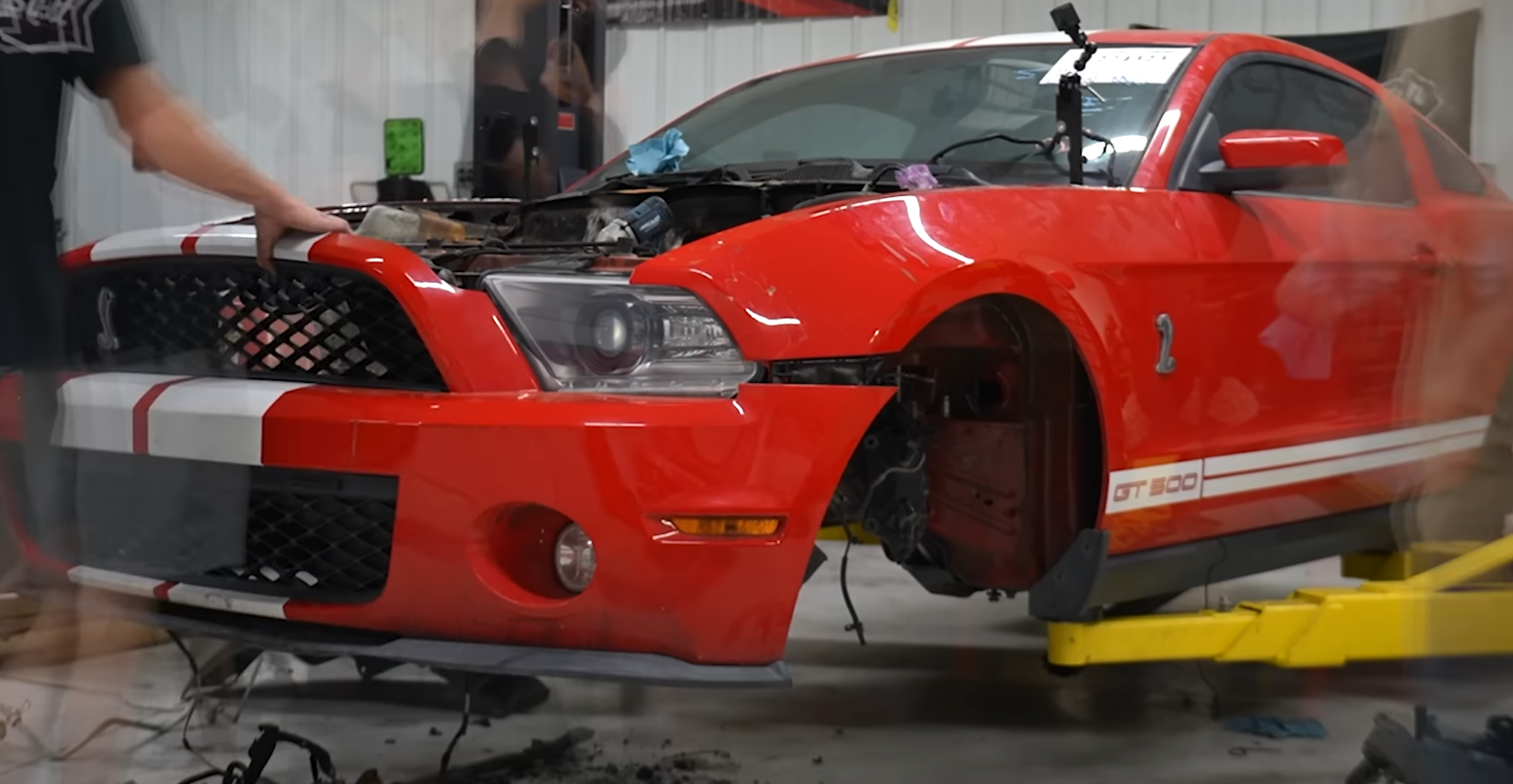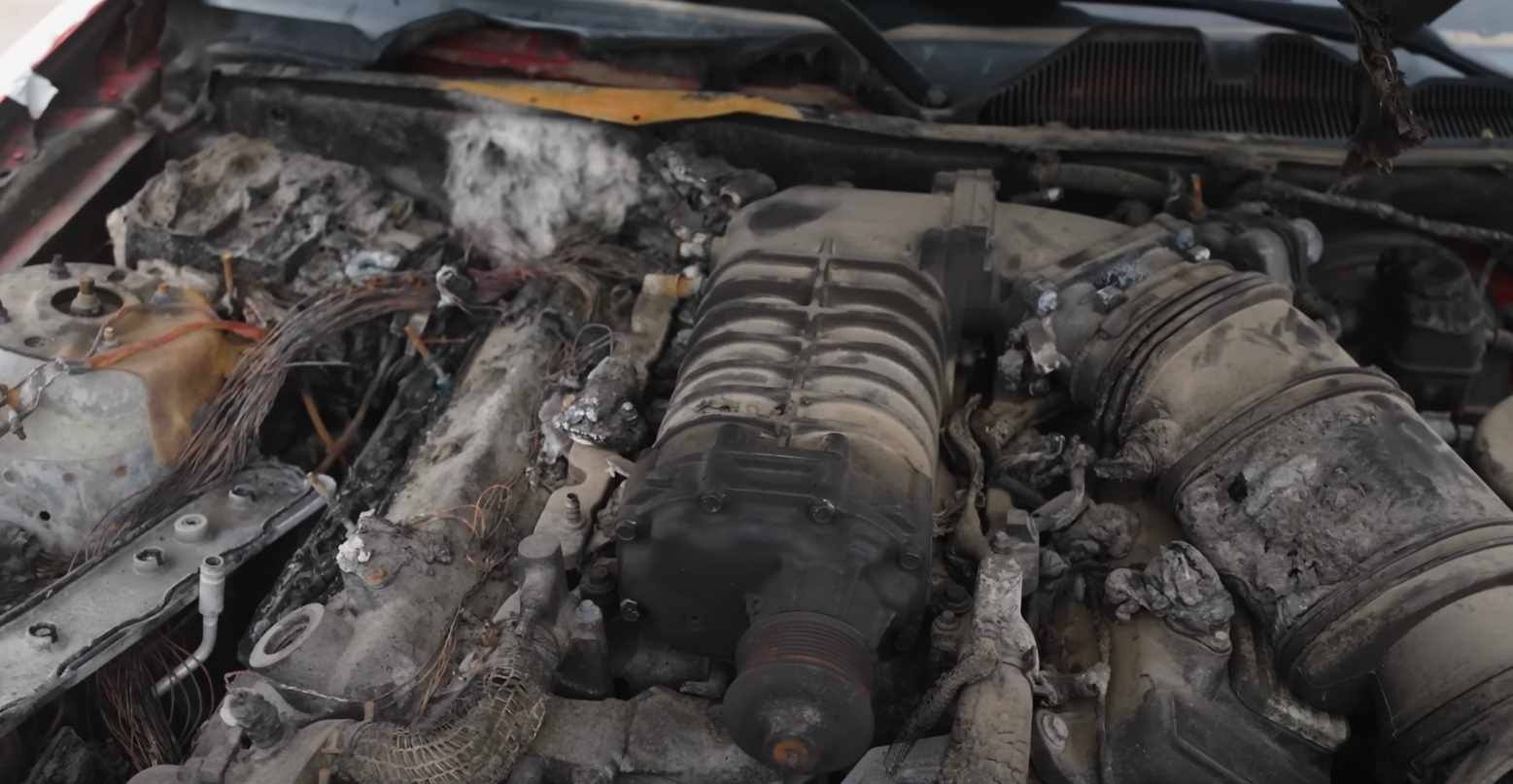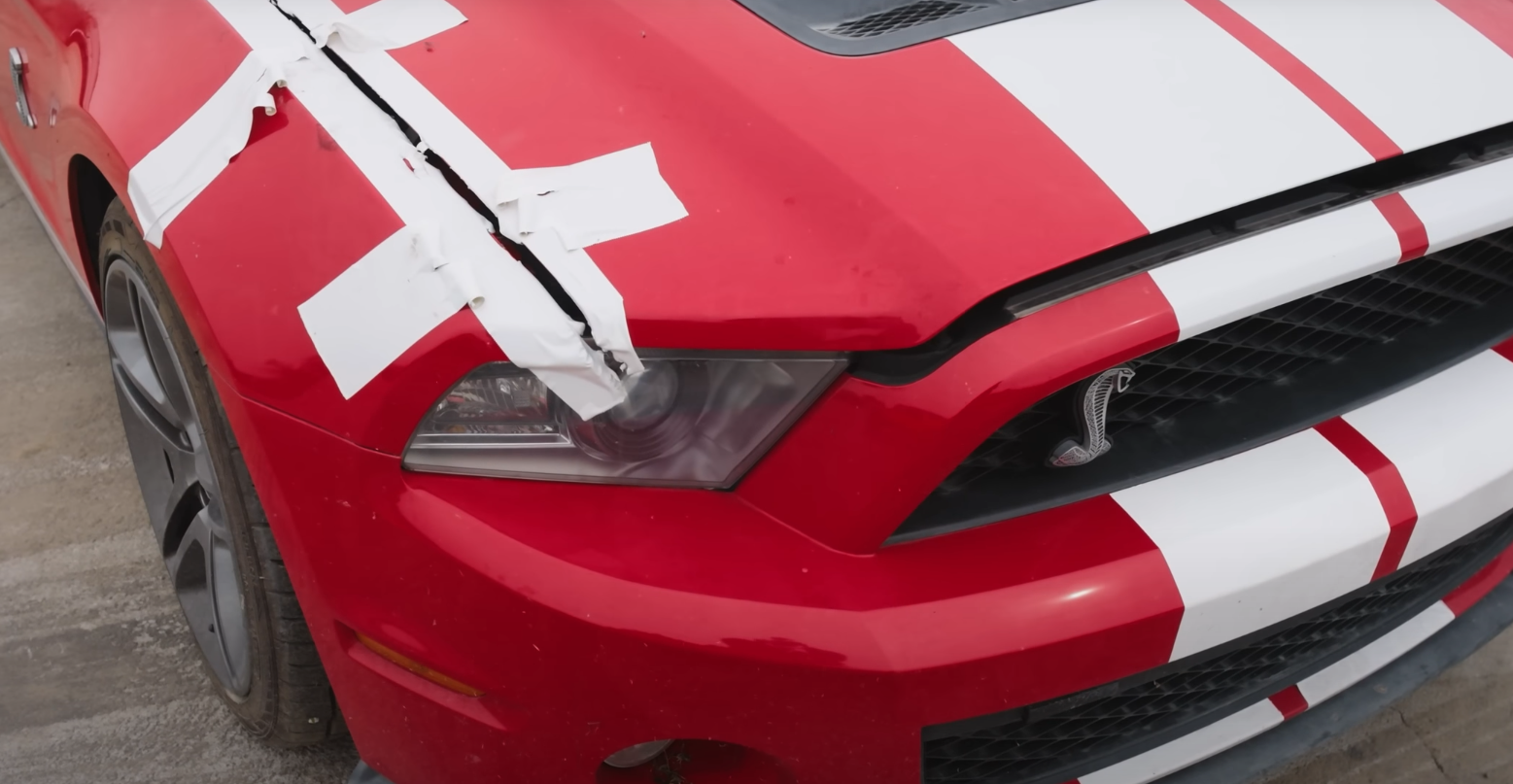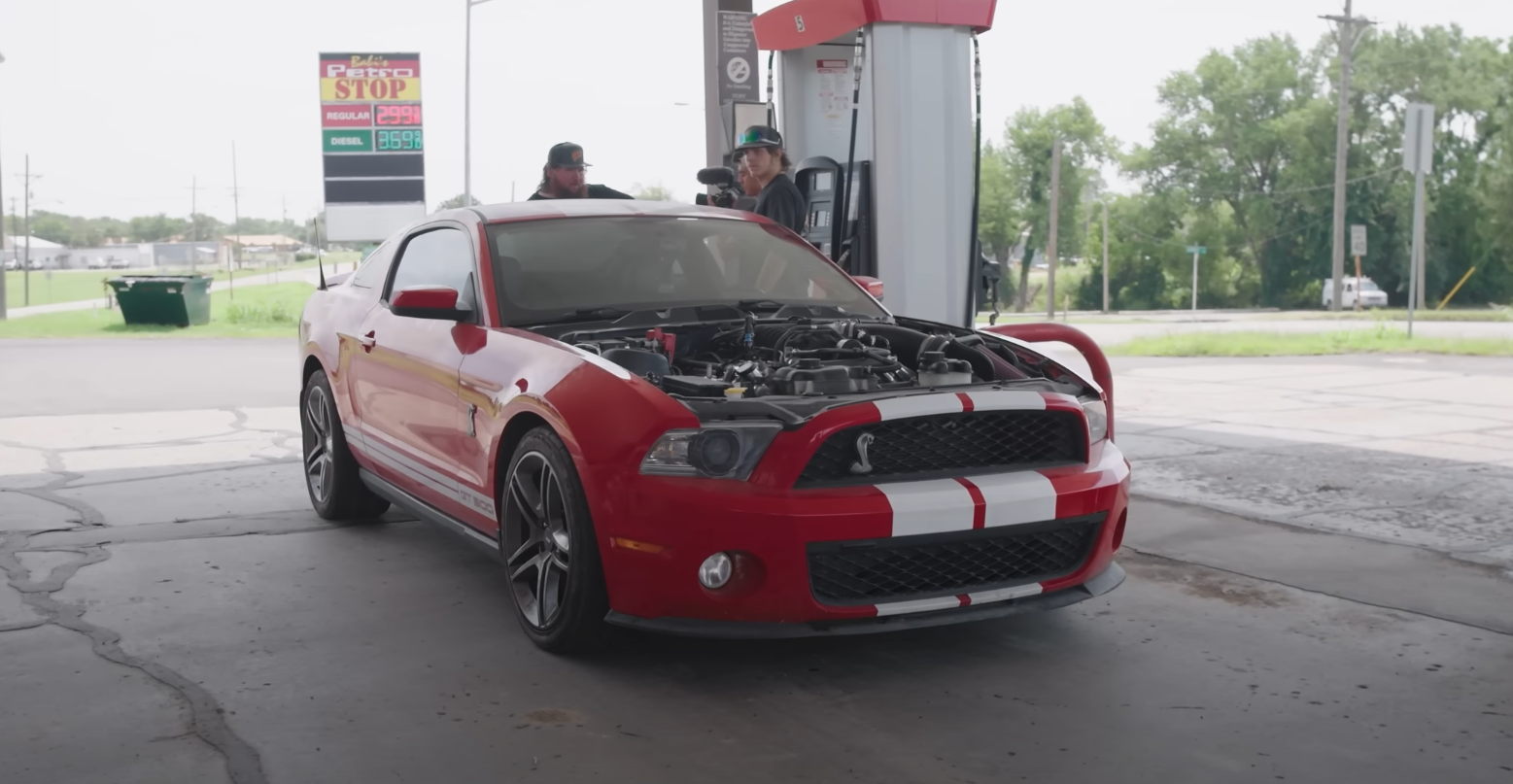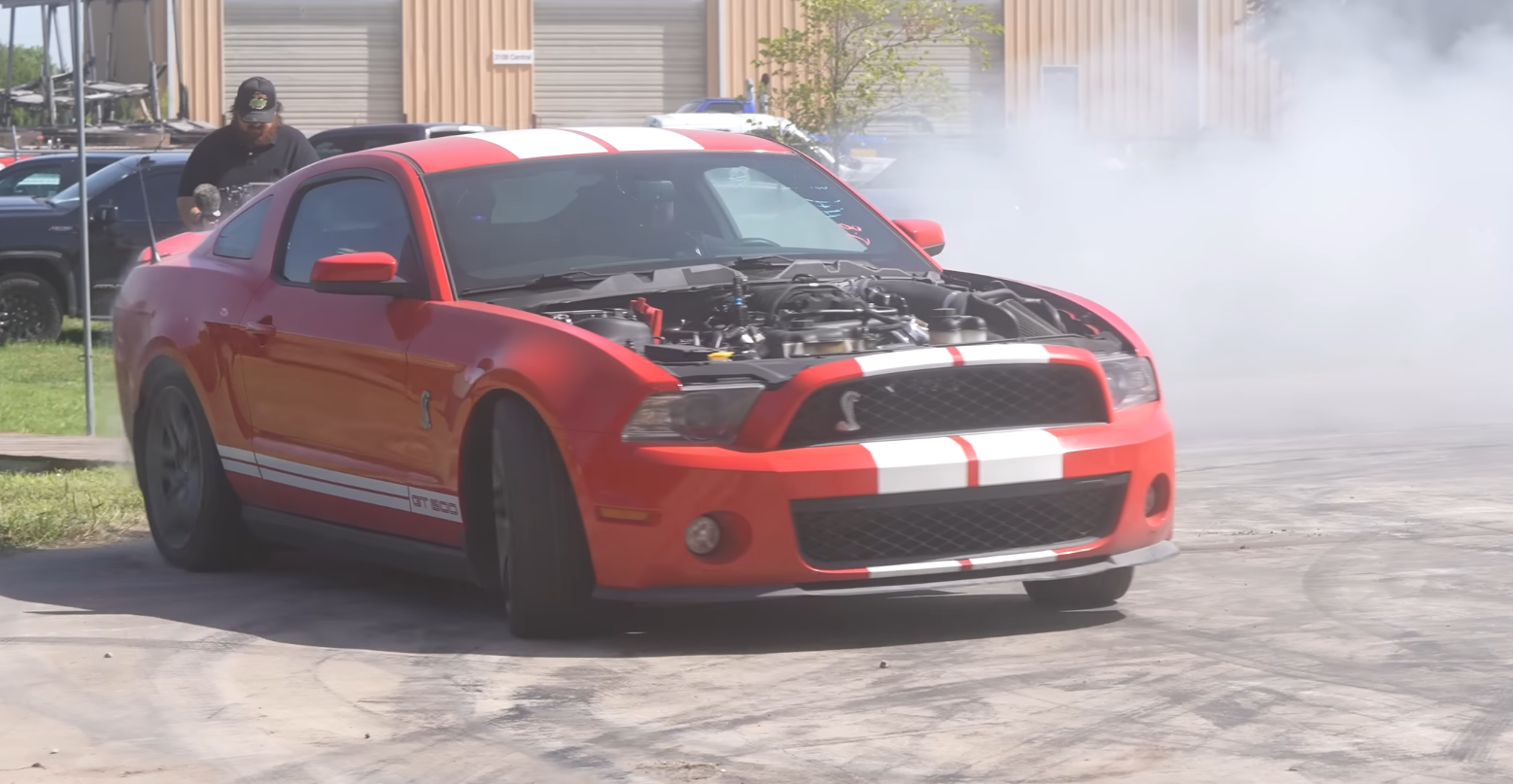For years, he wanted a Ford Shelby GT500, and when the chance came to buy one, he didn’t hesitate—even though the car had suffered a serious engine fire. The damage left much of the wiring, fuel system, and electronics destroyed, but the core of the car still showed promise. From the outside, the body remained in good shape, and the motor itself looked like it might still be usable.
The plan was straightforward: strip out the ruined parts, clean and repaint the engine bay, and replace everything necessary to bring the car back to life. With new components on hand and careful work, the GT500 began to come together again. Alongside the rebuild, he also prepared to surprise a giveaway winner with a unique custom truck, adding another highlight to the project.
Key Takeaways
- The car arrived with major fire damage but a solid foundation.
- Careful disassembly, cleaning, and new parts moved the project forward.
- The process ended with both a restored car and a giveaway surprise.
Ford Shelby GT500 Fire Damage Assessment
Condition at Purchase
The Shelby GT500 arrived with a history of an engine bay fire. The car itself showed minimal exterior damage, but the under-hood components had been heavily affected. Despite the fire, the vehicle retained its stock 5.4L supercharged engine, Brembo brakes, and solid transmission.
Key Notes:
- Red body with no major exterior damage
- Stock motor and supercharger still in place
- Transmission and exhaust appeared unaffected
Engine Compartment Damage
The fire destroyed several critical systems in the engine bay. The fuel system, wiring harness, and ECM were completely burned. Some plastic components melted, including a valve cover cap that fused into the baffle. However, internal engine parts looked clean and undamaged.
Damaged Components:
- Wiring harness
- ECM
- Fuel rails and coils
- Coolant tanks and hoses
- Valve covers (burned and discolored)
Reusable Parts:
- Alternator wiring intact
- Transmission in good condition
- Exhaust system unaffected
Body and Frame Inspection
The fire damage was concentrated above the motor, leaving the lower structure in good shape. The firewall required repainting after cleanup, and the team refinished it in black due to limited paint availability. Replacement parts such as wiring, reservoirs, and hoses were installed to restore functionality.
Work Completed:
- Burned components removed
- Firewall repainted and detailed
- New wiring harnesses and reservoirs installed
- Polished valve covers added for improved appearance
The chassis and exterior panels remained solid, showing no evidence of structural compromise.
Tear Down and Recovery Steps
Removing the Subframe and Powertrain
The team lowered the subframe from underneath the car to pull the motor, transmission, and supporting parts as one unit. Since the fire destroyed much of the wiring and fuel system, the focus stayed on salvaging the core drivetrain. With most of the upper components already ruined, the removal process moved quickly.
Key tasks included:
- Disconnecting the wiring harness and fuel lines
- Detaching radiator hoses that could still be reused
- Dropping the subframe to free the engine and transmission
Checking What Can Be Reused
After the fire, many top-end parts were melted or warped, but several lower components remained in good shape. The alternator wiring stayed intact, the transmission looked nearly new, and the exhaust showed no major damage. Even the inside of the motor appeared solid aside from minor melted plastic.
Parts in good condition:
- Transmission
- Exhaust system
- Alternator connections
- Internal motor components
Parts needing replacement:
- Wiring harness
- Fuel rails and coils
- Coolant tanks and hoses
- ECM and sensors
Working With Out-of-Production Parts
Because many GT500 parts are no longer made, every salvageable piece carried extra value. Radiator hoses and small fittings were carefully removed to avoid damage. When replacement was unavoidable, the team sourced new components from specialty suppliers.
| Part Type | Status | Action Taken |
|---|---|---|
| Radiator hoses | Discontinued | Saved when possible |
| Wiring harness | Burned beyond use | Replaced with new |
| ECM | Destroyed | Ordered from supplier |
| Valve covers | Burned | Polished for reuse |
By combining preserved factory parts with carefully sourced replacements, the rebuild stayed on track despite the fire damage and discontinued inventory.
Component Replacement and Repair
Electrical System and Control Module Swap
The fire destroyed the original wiring harness and ECM, so both had to be replaced. New harnesses were installed throughout the engine bay, and a fresh ECM was sourced and programmed. This step was critical to restore the car’s electrical system and allow the engine to communicate with all sensors and components.
Key replacements included:
- Complete wiring harnesses
- Engine Control Module (ECM)
- Ignition coils and connectors
Cooling System Repairs
Several cooling parts were damaged in the fire and required replacement. New coolant tanks and hoses were installed to ensure proper circulation. A few radiator hoses were saved, but most components had to be swapped out to guarantee reliability.
Cooling parts addressed:
- Coolant reservoirs
- Hoses and fittings
- Radiator connections
Restoring the Valve Covers
The original valve covers were too burned to repaint. Instead, they were polished to a clean finish. This gave the engine a refreshed look while keeping the parts functional. The polished covers provided a durable solution that fit the overall rebuild.
Finding and Installing Replacement Parts
Since many GT500 parts are discontinued, sourcing replacements was a challenge. Every usable component was kept, while the rest came from aftermarket suppliers. Once the engine bay was cleaned and painted, the new and restored parts were installed to bring the car closer to running condition.
Parts sourced and installed:
| Part | Status |
|---|---|
| Wiring harness | New |
| ECM | New |
| Coolant tanks | New |
| Fuel rails | New |
| Valve covers | Polished |
| Brake reservoir | New |
Engine Bay Cleanup and Preparation
Damaged Parts Removal
The team pulled the motor, transmission, and subframe to clear the bay. Burnt wiring, hoses, and melted plastic were stripped out. Any reusable parts, like radiator hoses, were set aside since many GT500 components are discontinued.
Key damaged items removed:
- Wiring harnesses
- Fuel system parts
- ECM and sensors
- Burnt plastic pieces
Washing and Fresh Paint
With the bay cleared, the car was rolled outside for a pressure wash. The firewall and surrounding areas were then painted black, since matching red paint was not available. Masking tape kept edges clean, and once the paint dried, the team removed the coverings.
| Step | Task | Result |
|---|---|---|
| 1 | Pressure wash | Removed soot and debris |
| 2 | Masking | Protected clean areas |
| 3 | Black paint applied | Fresh, uniform finish |
Setup for Reassembly
New wiring harnesses, brake reservoirs, and coolant parts were installed to prepare for the motor’s return. The valve covers, too damaged to repaint, were polished for a clean look. Final wiring adjustments were made before the engine was set to be lowered back in with a forklift.
Parts already replaced:
- Wiring harnesses
- Brake reservoir
- Coolant tanks and hoses
- Polished valve covers
Reassembly and Final Touches
Installing the Engine and Gearbox
The team lowered the subframe and removed the motor and transmission together, making room to clean and repaint the engine bay. After the fresh coat of black paint dried, they prepared the drivetrain for reinstallation. With the forklift ready, the engine and transmission were set to be dropped back into place once the wiring and mounts were finished.
Key steps included:
- Removing all burned parts before reinstallation
- Painting the firewall and bay for protection and appearance
- Using original components where possible due to discontinued parts
Electrical Work and System Adjustments
New wiring harnesses, coolant tanks, and hoses replaced the fire-damaged parts. The ECM and other electronic components were installed to restore engine management. Extra care went into routing wires and securing connections to avoid future issues.
Replacements added:
| Component | Status |
|---|---|
| Wiring harness | New |
| ECM | New |
| Coolant tanks | New |
| Fuel rails | New |
| Coils | New |
Mechanical checks followed, including hoses, mounts, and small adjustments to ensure everything aligned correctly.
Visual Improvements
Instead of repainting the burned valve covers, the team decided to have them polished for a cleaner look. This gave the engine bay a sharp finish without trying to match the original blue. Alongside the polished covers, new reservoirs and hardware gave the bay a refreshed appearance.
Cosmetic upgrades:
- Polished valve covers
- Fresh black engine bay paint
- New brake reservoir and hardware
These finishing touches made the GT500 look far better than its fire-damaged state and prepared it for the final assembly.
Test and Completion
System Review
The team removed all damaged parts from the burned GT500 and replaced them with new components. Key replacements included:
- Wiring harnesses
- Coolant tanks and hoses
- Coils and fuel rails
- ECM unit
They also cleaned and repainted the firewall in black before reassembly. The valve covers, instead of being repainted, were polished for a clean finish.
Initial Engine Trial
With the wiring complete and the motor prepared, the group used a forklift to set the engine back into place. Careful checks ensured the alternator, transmission, and exhaust remained in good condition. The goal was to confirm the motor’s internal health and see if the new electrical system would allow the car to start.
Final Review
Before the first drive, they inspected the bay for leaks, loose wiring, and alignment of parts. The polished valve covers, new brake reservoir, and freshly painted surfaces gave the car a restored look. With the last shock replaced and wiring secured, the GT500 stood ready for its first full run after the rebuild.
Redneck Science Giveaway Announcement
Mini V8 Raptor Prize Winner
The giveaway for the Redneck Science merchandise has come to a close, and the winner of the Mini Supercharged V8 Raptor is Brett from Kansas City. His name was drawn from the pool of entries, and the team prepared to deliver the prize directly to him.
Winner Details:
| Name | Location | Prize |
|---|---|---|
| Brett | Kansas City, MO | Mini Supercharged V8 Raptor |
Unplanned Prize Drop-Off
Instead of notifying Brett ahead of time, the team drove to his neighborhood without warning. They parked just half a mile from his house and decided to surprise him at the door. When Brett answered, he was shocked and nearly speechless. His first reaction showed disbelief, and he admitted his knees felt weak from the surprise.
The truck was waiting outside for him, polished and ready. The only thing left for Brett to do was grab his shoes and take it for a drive.
Sharing the Moment with the Community
The giveaway served more than just handing over a truck. It allowed the team to connect with the community that supports their projects. By showing up in person, they created a genuine moment of excitement and gratitude.
The experience highlighted how these events help fund builds while also giving back to fans. Brett’s reaction captured the spirit of the giveaway—real people, real prizes, and a direct way to share the results of community support.


